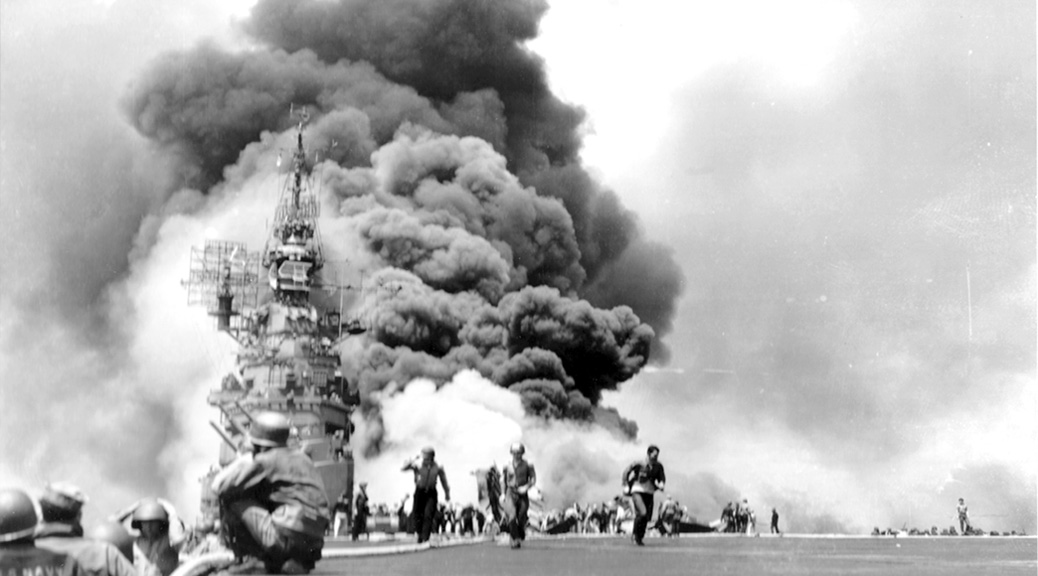Okinawa was the last defensive piece still standing on the chessboard; it was all that stood between the Americans and her Allies and Japan.
Daily strikes by TF58 on Okinawa (Operation Iceberg) began on March 23, 1945. Two months and almost a week later, the Task Force was still attacking Okinawa daily. On this day, Task Force 58 became Task Force 38, with command reverting to Admiral Halsey. On June 10, 1945, the ships departed the Okinawa Islands and headed back to Leyte, thus ending Operation Iceberg.
April 1, 1945 was “D-Day Okinawa” and the invasion by Marines and Army infantrymen and the ensuing battles raged on until June 22. Casualties on the island itself were staggering: more than 12,500 American casualties (killed or missing), more than 77,000 Japanese soldiers killed, and as many as 150,000 civilian deaths – by both combat and by suicide.
A less told story is the staggering loss of life and ships to the Allied task Force (a British Task Group joined Task Force 58 before Okinawa) at the hands of kamikaze attacks. Fleet warships, transport, landing craft, and fleet service and support ships of all stripes came under systematic, organized blistering suicide attacks (“kikusui”) by last-gasp Special Attack Forces. Kamikaze attacks had happened before Okinawa, mostly as random acts against American ships. In Okinawa, however, mass suicide attacks by planes on American ships were an official (and effective) strategy.
To protect the Task Force warships and the Assault Force ships, A large ring of “radar pickets” – mostly destroyers – were positioned outside the large concentration of warships. Their job was to create a radar perimeter far enough away from the big ships to give warning to impending attacks. The picket ships were often the first ships that suicide pilots encountered during an attack, and they took the brunt of the waves of kikusui.
(From U.S NAVY AT WAR, Second Official Report by Fleet Admiral Ernest J. King):
The first enemy air attack at Okinawa occurred on 24 March when the minesweepers arrived; the first damage was done on 26 March; and by 21 June, when organized resistance had ceased, about 250 vessels of all classes from battleships and carriers down to destroyers and landing ships, had been hit by air attack, by far the greatest proportion of them in suicide crashes. Some 34 destroyers or smaller craft were sunk. Early warning of impending attacks proved to be the best countermeasure and for this purpose destroyers and other small vessels were stationed as pickets at appropriate distances from the concentrations of heavier shipping. These pickets took the heaviest losses themselves, but in doing so they undoubtedly saved many bigger and more valuable vessels during a critical three months.
PHOTO (above): (National Archives): USS Bunker Hill CV-17 hit by 2 kamikazes in 30 seconds on 11 May 1945 off Kyushu. Dead-372, Wounded-264

